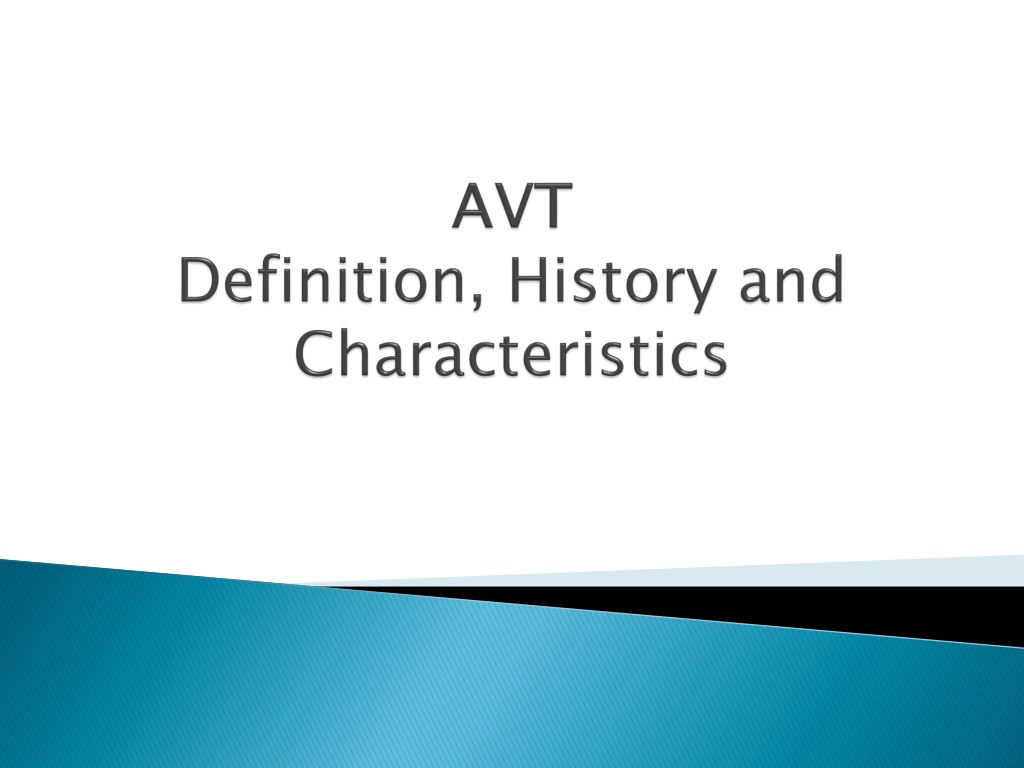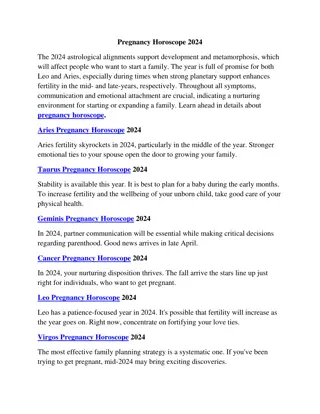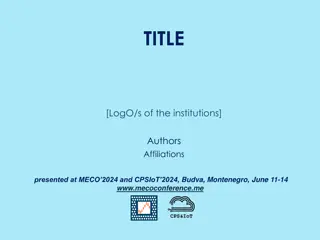
Exploring Audiovisual Translation and its Evolution in Film and Television
Discover the world of Audiovisual Translation (AVT) and its crucial role in transferring verbal components across different languages in various audiovisual works and products. From the historical development of AVT to its current surge in Translation Studies, delve into the complexities of translating audiovisual content for a global audience.
Uploaded on | 0 Views
Download Presentation

Please find below an Image/Link to download the presentation.
The content on the website is provided AS IS for your information and personal use only. It may not be sold, licensed, or shared on other websites without obtaining consent from the author. Download presentation by click this link. If you encounter any issues during the download, it is possible that the publisher has removed the file from their server.
E N D
Presentation Transcript
Audiovisual translation (AVT) is the term used to refer to the transfer from one language to another of the verbal components contained in audiovisual works and products. Feature films, television programs, theatrical plays, musicals, opera, web pages, and video games are just some examples of the vast array of audiovisual products available and that require translation. As the word suggests, audiovisuals are made to be both heard (audio) and seen (visual) simultaneously but they are primarily meant to be seen (Sanderson, 2005: 4). As the word suggests, audiovisuals are made to be both heard (audio) and seen (visual) simultaneously but they are primarily meant to be seen (Sanderson, 2005: 4).
AVT is actually one of the fastest growing areas in the field of Translation Studies (TS). Due to the unprecedented surge in interest in Translation Studies (TS), expansion academic 2008:1). the AVT and discipline is consolidation experiencing the an as Cintas, (Diaz
Terms such as film translation or cinema translation were often used, but these terms were restricted because this kind of activity takes programmes cartoons, etc..) A term that could be a good alternative translation , because it refers to all products distributed Remael, 2006:12). into account also other documentaries, types of (sitcoms, to the ATV term is screen on screen. (Diaz Cintas and
It can be said that AVT beginnings started through looking at the translated intertitles and film explainers to look at the transition to sound and then at the development of subtitling and dubbing. Audiovisual translation studies has been experiencing a resurgence in interest in historical approaches since the early 2010s. film translation was widely used in the pre-TV era before using the up-to-date term of AVT. intertitles film explainers of the silent era. It goes on
Pre speechless: mouths could be seen speaking on the screen and title cards conveyed narration and the gist of dialogues actually or seemingly spoken by the actors. The AVT researchers have tended to write off this field on the grounds that the translation of silent film is unproblematic, at least by comparison with the problems which accompanied the coming of sound. Even during the silent film area it was very important to convey to the viewers the dialogue of the actors on screen. Pre- -sound era sound era: films were silent, but not
This problem was solved by the now call intertitles the predecessors of the subtitles. They were texts, printed on paper and placed between the sequences of the film. Their first appearance was in 1903 as descriptive titles in Edwin S. Porter's Uncle Tom's Cabin. original titles were removed, translated, filmed and re-inserted. Alternatively, a translator used to give a simultaneous translation to the audience. The very first sub-titles first appeared in 1909. In fact, M. N. Topp registered a patent for device for the rapid showing of titles for moving pictures other than those on the film strip (Ivarsson, 2004:1). By using some kind of a slide projector, subtitles were shown on screen below the intertitles. intertitles: They were texts, printed on paper and placed between the sequences of the film. Their first appearance was in 1903 as descriptive titles in Edwin S. Porter's Uncle Tom's Cabin. Translating such dialogues was quite easy: the
Audiovisual translation and the transition to sound: synchronized speech was first introduced in American films, and solutions quickly needed to be devised to successfully maintain the worldwide distribution of Hollywood product of movies and other types of media. The first talking film to be released internationally was Warner Brothers The Jazz Singer (Crosland 1927). Although mainly a silent film with a musical sound-track and only a few live talking scenes, it heralded the talking era and continues to be perceived as its starting point to this day.
1. The use of images: this type of translation differs from other types of translation alongside the images being broadcast, so the text needs to tie in with the image. since it's always shown
2. Short deadlines: for the most part, translation projects have tight delivery lead times, but it goes even further in the case of audiovisual translation. For example, if episodes of a series are being shown with little time in between, there's even less time for translation, and margin for error.
3.The use of specialization of different fields: another defining feature a translator needs to have is that in addition to having mastery of the source and target languages, they also need to specialize in a number of sectors. After all, audiovisual works can cover a number of different subjects: medicine, legal, IT, etc.
4. Speech: with this characteristic we refer to the ability to symbolize a previously translated natural and spontaneous dialogue. It might sound easy, but it is not. What is logical to one person in a certain context might seem totally out of place for another person. For that reason, a translator should be able to transfer written language to the screen without adding strange expressions or demanding an unreasonable, unnatural effort on part of the character who is speaking (Orero, 2004: 13).
THANK YOU






















